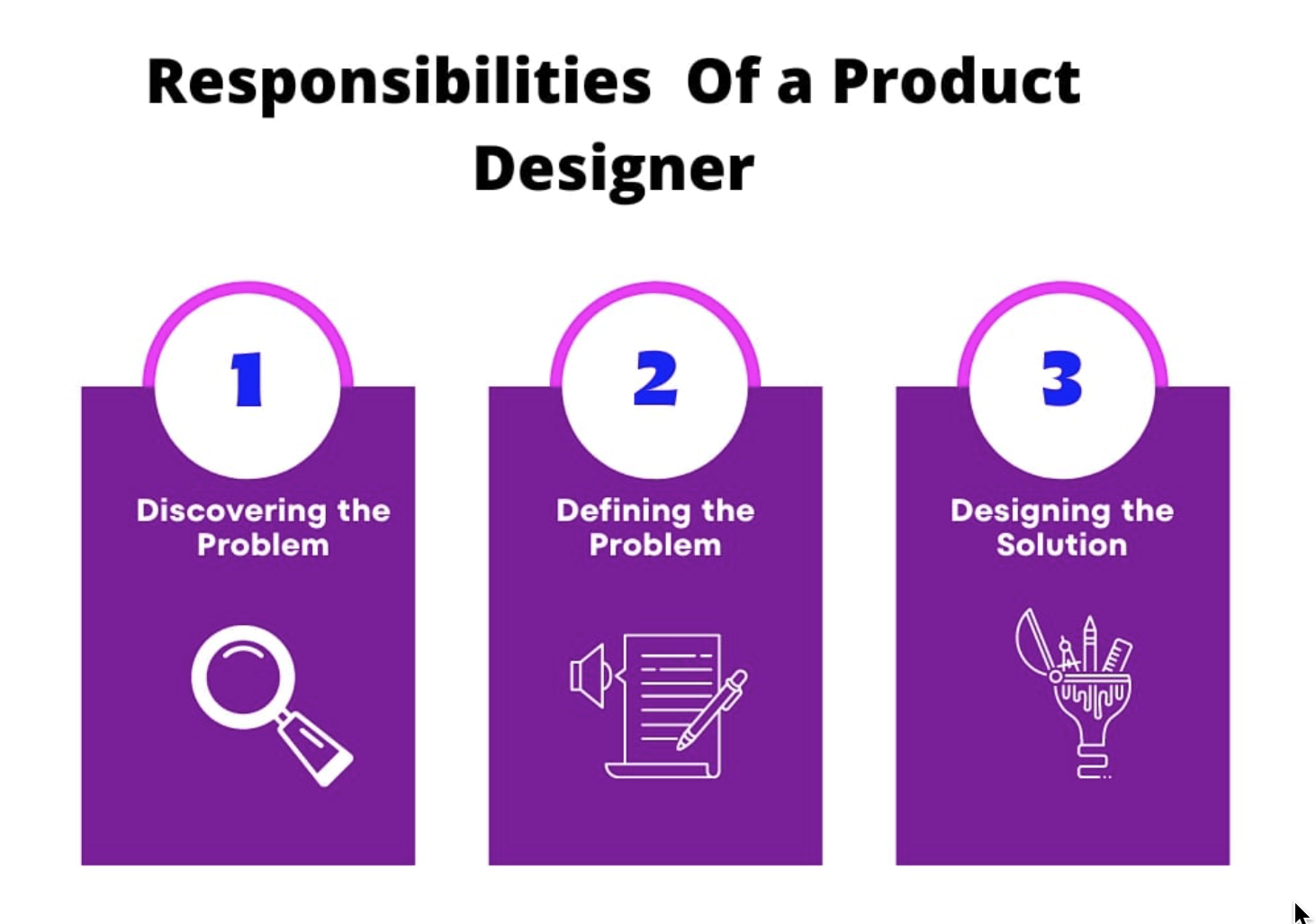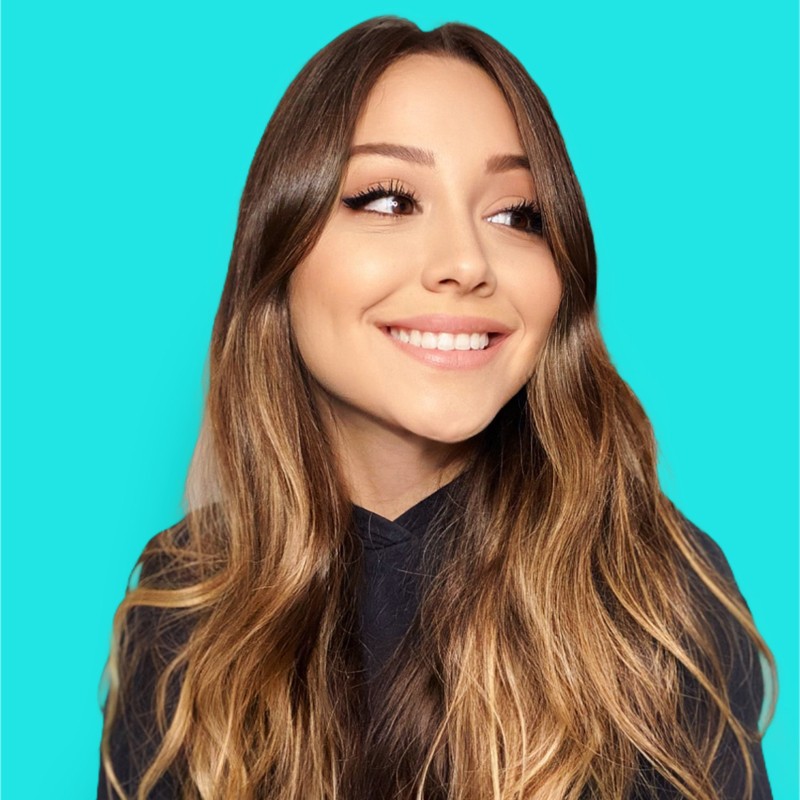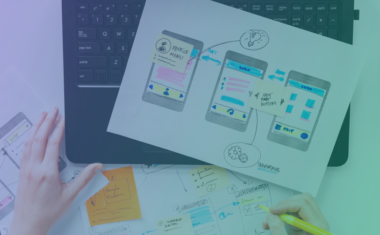Free UX Design Course
Dive into UX design with our free starter course. Transform your creative ideas into user-friendly solutions.
If you’re exploring the world of user experience (UX) design, you might already know what visual designers or user experience researchers do. These roles are clear-cut and easy to define—but what about the role of a product designer?
The role of a product designer is more difficult to define without in-depth knowledge of the UX design process. If you’re wondering what exactly a product designer is, this guide has you covered.
What Does a Product Designer Do?

Product designers create solutions for digital products. The job description of a product designer may vary according to the unique needs of a design department or employer—but most conduct UX research to learn about user pain points and design solutions that align user needs with business goals. Product designers are commonly responsible for project management, and many focus on improving products after launch. They work with existing products to create better experiences for users and oversee the continuous evolution of a product’s design.
How Is Product Design Different from UX Design?

While product designers and user experience designers utilize common skills, product design focuses on the continuous development and improvement of existing products. UX design, on the other hand, focuses on the creation of new products or complete redesigns of existing products.
Product designers focus on the big picture and oversee the design process that a product undergoes after launch. They identify points of friction that are revealed by user interactions with a product and develop solutions that smooth those points of friction for users. They also strategize ways to help users learn about new features that ameliorate their pain points.
Conversely, UX designers create the initial design of a product from scratch and are responsible for formulating a functional product within a given timeframe. They solve new problems and must create within a specific set of design requirements handed down by a product’s stakeholders.
Product Designer Overview

Read on to learn more about product design responsibilities, compensation, job titles, and more.
What Are the Responsibilities of a Product Designer?
Product designers coordinate the improvement of existing products. They are responsible for deliverables such as:

- User research. To understand user pain points, attitudes, motivations, and goals, product designers collaborate with product managers and UX researchers to succinctly define users, verify user problems, and determine KPIs (key performance indicators) to measure the success of possible solutions.

- User journey maps. These artifacts tell a story about a user’s cognitive and emotional progression through the process of using a product. Product designers create these maps to identify sites of friction and opportunities for product improvement.


- Wireframes. Wireframes are simplistic sketches that function as a blueprint for a product’s design. Product designers use wireframes to quickly ideate design solutions and encourage rapid iteration. Pen and paper, whiteboards, or digital design tools are used to sketch out these low-fidelity drafts.

- Prototypes. Product designers create prototypes to test design solutions with users. While some prototypes are quite simple, others are clickable, high-fidelity deliverables that mimic real products. These deliverables are created using prototyping tools like Figma, AdobeXD, and more.

- High-fidelity mock-ups. After vetting a solution through multiple user tests, product designers create a detailed, functional version of their design that mirrors the final version of a coded product—complete with detailed visual design elements. The product development team uses these mock-ups to guide the engineering process.
Overall, product designers are responsible for improving the experience that users have when interacting with a product. To do so, they focus on three key aspects of design:

- System design. This type of design focuses on creating a product architecture and product components that meet user needs while satisfying business requirements. Product designers consider how to organize and present a product’s information and design elements to help users achieve their goals.

- Process design. This type of design focuses on the process that the user goes through to achieve their goal. Product designers develop solutions to simplify and streamline this process and create a frictionless experience for users.

- Interface design. Users interact with digital products through graphical interfaces that utilize visual elements. Guided by interaction design principles like consistency, visibility, and user control, product designers redesign user interfaces to be more efficient and intuitive.
Get To Know Other Design Students
Bibi Tanjasiri
Product Designer at Hatch
Reyna Martinez
Associate UX Designer at ServiceMax
Volkan Kantar
UX Designer at Microsoft
What Are Some Common Product Design Roles?
Product designer roles have many different names, including:
- Interaction designer. This role focuses on streamlining product functionality. Interaction designers strive to optimize the experience that users have when interacting with a product’s interface.
- Experience architect. These professionals focus on articulating user stories and journeys through a product’s information architecture and interface. They identify and analyze opportunities to enhance user emotions.
- Information architect. This role focuses on the organization of information within digital products. Information architects work to help users easily find the information they need, and strive to categorize and structure information in ways that are intuitive to users.
- Industrial designers. Product design may also refer to the refinement of physical products like electronics and furniture. Those who focus on the design of physical products are known as industrial designers.
How Can You Become a Product Designer?
To become a product design professional, you’ll need to build UX design skills, create a portfolio, and gain experience. Let’s break that down.
Building Relevant Skills
Enrolling in a UX/UI design bootcamp is the fastest way to build the technical skills you need to get hired. Industry-leading programs like Springboard’s UX/UI Design Career Track will help you master skills like wireframing, prototyping, visual design, user research, user testing, and more.
Creating a Design Portfolio
Enrolling in a UX/UI design bootcamp that focuses on project-based learning can help you build a professional portfolio that will impress hiring managers. Using industry-standard product design tools, students enrolled in Springboard’s UX/UI Design Career Track build four real-world design projects to create a well-rounded professional portfolio.
Gain Experience
Once you’ve got UX/UI design skills under your belt, volunteer your services to friends, family, non-profits, or local small businesses. Try improving the design of their existing websites and determine KPIs to measure your success. This is also an opportunity to practice soft skills like communication, listening, and time management.
How Much Do Product Designers Make?
According to Glassdoor, product designers in the United States earn a total of $95,807 on average—which includes a base salary of $80,994 and additional pay (such as bonuses and commission) of $14,813.
What Are Some Examples of Product Design?

A digital product can be an entire website or application—but product design deliverables also encompass components or features within larger digital products. Examples of product design include:

- Drag and drop tools. This feature is intuitive, easy to use, and puts users in control while allowing them to exert minimal effort. Drag and drop tools simplify the UX of email, content management systems, landing page builders, and more.

- The home button. This element helps users navigate digital products effortlessly and efficiently. Home buttons help users navigate a product confidently. The presence of a home button reassures users that they can return to a familiar page if they are lost and restart their product navigation process if necessary.

- Trello. This productivity app helps users organize their workload smoothly and simply. The app allows users to create boards for tasks in their pipelines. Using a drag-and-drop function, users can track their progress by moving tasks around their board according to the task’s phase of completion.
Product Designer: Day in the Life
Curious about the day-to-day activities of a product designer? Let’s dive in.
- User research. The product design process begins with user research. Qualitative and quantitative user research helps identify issues that users experience with a product after launch. Data gleaned from user research can shed light on the emotional state of users as they progress through the process of using a product and can point toward potential opportunities to create a more pleasurable user experience. Check out this day-in-the-life video by Femke van Schoonhoven for a glimpse into a user research session at Uber.
- Ideation and design. Once user pain points, goals, attitudes, and mindsets are clear, product designers can ideate solutions to improve a product’s user experience. Rapid iteration and barebones wireframes are used to try out new ideas before moving on to more detailed prototypes.
- User testing. This phase of product development validates the efficacy and functionality of a design solution. User testing is often a multi-stage process that incorporates focus groups, surveys, interviews, A/B testing, and other methodologies. User testing results inform the next iteration of a product or feature. Watch this day-in-the-life video to see a real ideation session on a whiteboard.
Product Designer FAQs
Check out these answers to frequently asked questions about breaking into product design.
Is Product Design Hard To Learn?
If you enroll in a program like Springboard’s UX/UI Design Career Track, you’ll be able to learn product design in just nine months. A hands-on curriculum and one-on-one sessions with your industry expert mentor will help you become job-ready by the end of the course.
Through multiple end-to-end projects, you’ll build a thorough understanding of the entire design process and hone a range of skills, including wireframing, prototyping, interaction design, and more.
Do You Need a Degree To Become a Product Designer?
Many product design professionals do not hold a degree in product design. Because digital product design is an emerging field, UX/UI skills are commonly built through bootcamp courses or self-learning.
Can You Become a Product Designer With No Experience?
If you enroll in a bootcamp course that helps you build a professional portfolio, you’ll be able to land a job in product design without experience in the field. 99.5% of Springboard’s job-qualified UX/UI design students landed a job within 12 months of graduation.
Since you’re here
If you want to work in design, you can. It’s that simple. With our UX Bootcamp, we’ll help you launch your design career in 9 months or less. Browse our free UX salary guide to see what you could be making








